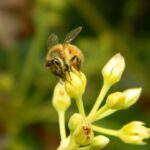Australia is home to a plethora of plants and animals that are not found anywhere else on Earth, making the conservation of our native wildlife especially important.
But Australia is facing an extinction crisis. In the past 200 years, we have lost more than 50 animal and 60 plant species, and Australia now holds the unwanted record for the highest mammalian extinction rate in the world.
Leanda Mason, a PhD student in the School of Molecular and Life Sciences, is dedicated to conserving our local trapdoor spider species (Myagalamorphae), some of which are facing extinction. Spiders may not be the most ‘charismatic’ of creatures, but they are no less deserving of our protection, and Leanda hopes her research will educate the public on the important role trapdoor spiders play in our ecosystems, and the rich diversity they add to our wildlife.
“The vast majority of Perth residents are unaware of the enormous amount of biodiversity still present in our picturesque city. Unfortunately, some of our treasured species are in great danger of disappearing forever,” says Leanda.
A long-time enthusiast of invertebrates (“I was that kid at school who had a snail as pet”), Leanda has recently submitted PhD research that examines the impact of urbanisation on trapdoor spiders.
“Trapdoor spiders are short-range endemics, which means they are confined to a very small area and often specialise in microhabitats.”
Leanda explains these microhabitats are primarily uncleared bushland in and around Perth such as Kings Park, Star Swamp, Trigg and Koondoola, and each species of trapdoor spider depends on specific leaf litter in these habitats to build their burrows and attract prey.
For example, the trapdoor spider Idiosoma sigillatum arranges fallen twigs from the sheoak tree around the rim of its burrow entrance, enabling it to feel the vibrations of unsuspecting prey that wander by.

Once a trapdoor spider has constructed its burrow, it will live there its entire life, which can be as long as 43 years.
But trapdoor spiders are under threat from habitat clearance, and Leanda’s research has found their numbers are being decimated by invasive veldt grass.
“This particular grass is very good at invading and then monopolising the urban bushland, resulting in a monoculture without the specialist places for our trapdoors to live,” she says.
“Because trapdoor spiders are very invested in one place, once they’re gone from particular patch, they’re gone forever.”
If you’re not keen on spiders, you might think the fewer eight-legged creatures that exist the better, but trapdoor spiders keep pest species like mosquitoes in check and provide us with a number of other benefits.
The venom of a Sydney funnel web spider, for instance, can be used to minimise the effects of brain damage in stroke patients and can also be used as a non-addictive alternative for pain medication.
If you look close enough, trapdoor spiders also have endearing qualities. Baby spiders are called spiderlings and will stay with their mother in the burrow for the first year of their life before venturing out and finding their own place not far from their mum’s. When female spiders are ready to mate, they will construct an intricate silk ‘doily’ outside their door and infuse it with pheromones to attract males.

Leanda says some people’s negative attitude towards spiders, and indeed any animal that’s not ‘cute and cuddly’, may be the result of misinformation and represents a disconnect between people and nature.
“There have been no confirmed deaths from spider bites in Australia since 1979,” says Leanda, “but it’s still socially acceptable to kill a spider when you see one, and that attitude is disappointing because it comes from a place of ignorance and fear.”
To better protect and conserve our trapdoors, Leanda suggests there needs to be increased holistic action by local councils to protect native bushland where trapdoor spiders live, as well as research into the management and eradication of veldt grass.
Leanda also encourages us to get outside more.
“It’s very humbling to be a part of nature. There is way too much ego associated with modern society, where we think we can destroy a habitat and there won’t be consequences.”
Leanda has started a Facebook page to share her passion for trapdoor spiders and help the public identify species they come across in the wild. She is also raising funds to continue the research of Barbara York Main, who recorded the world’s oldest spider.



